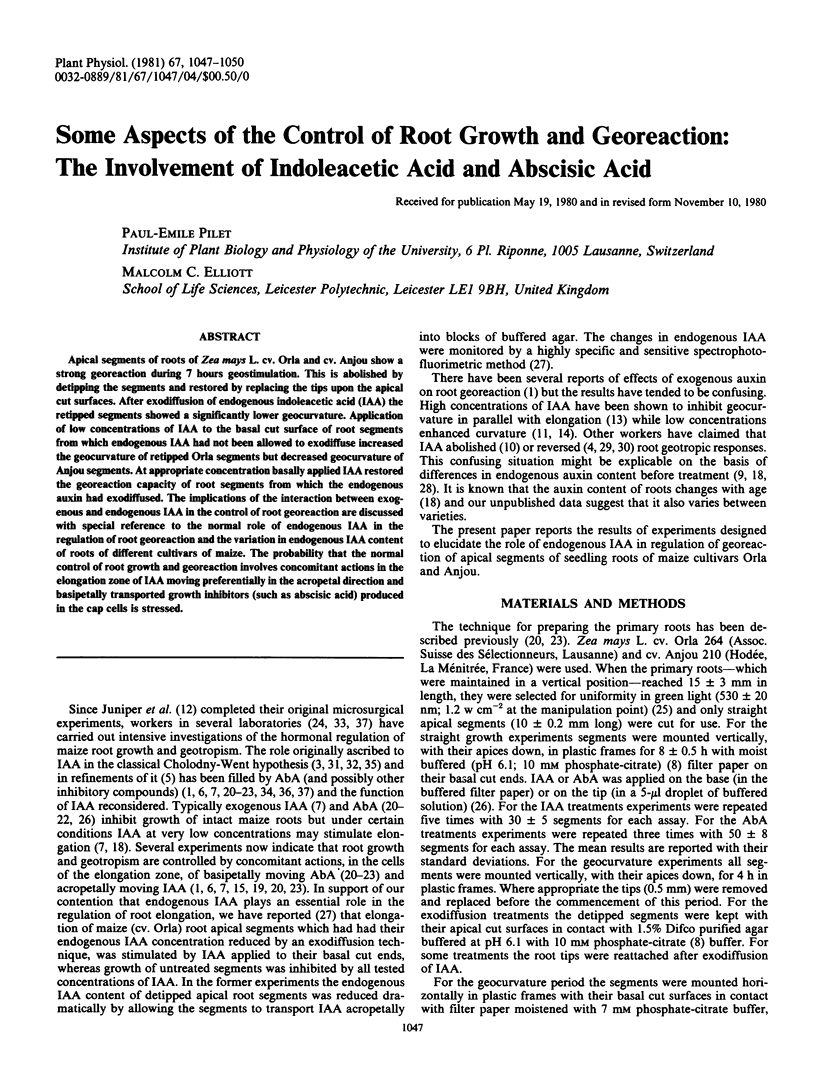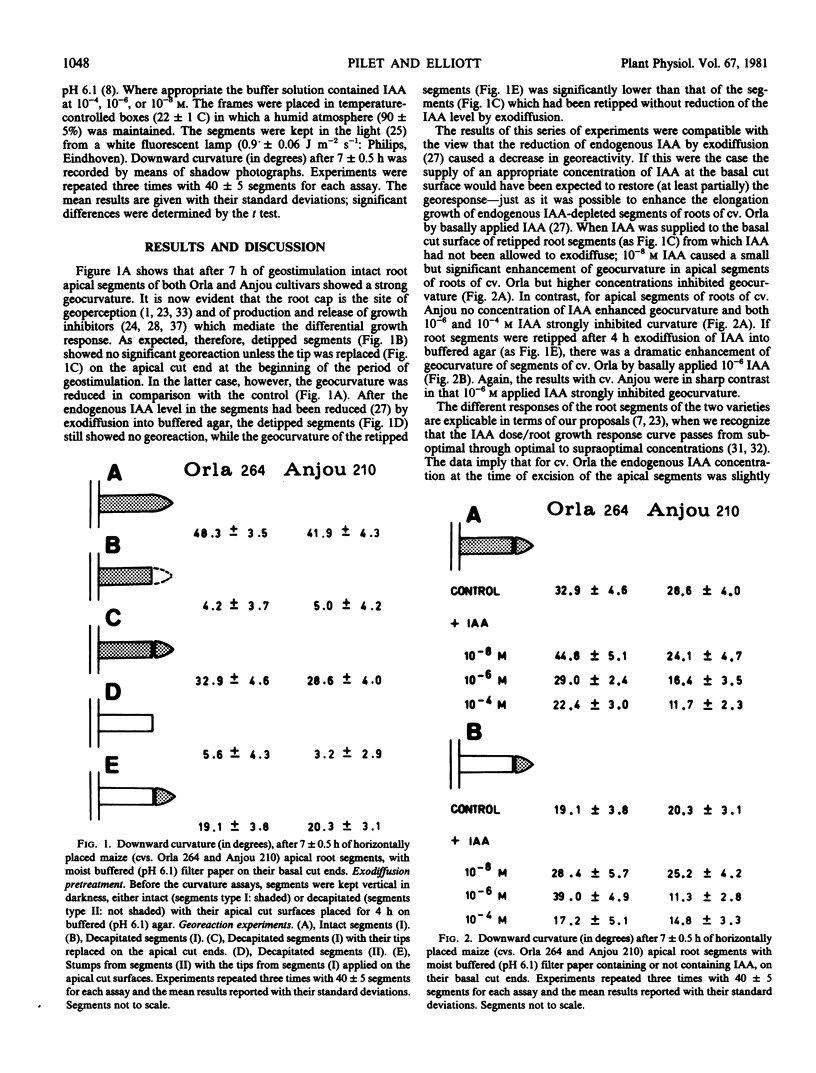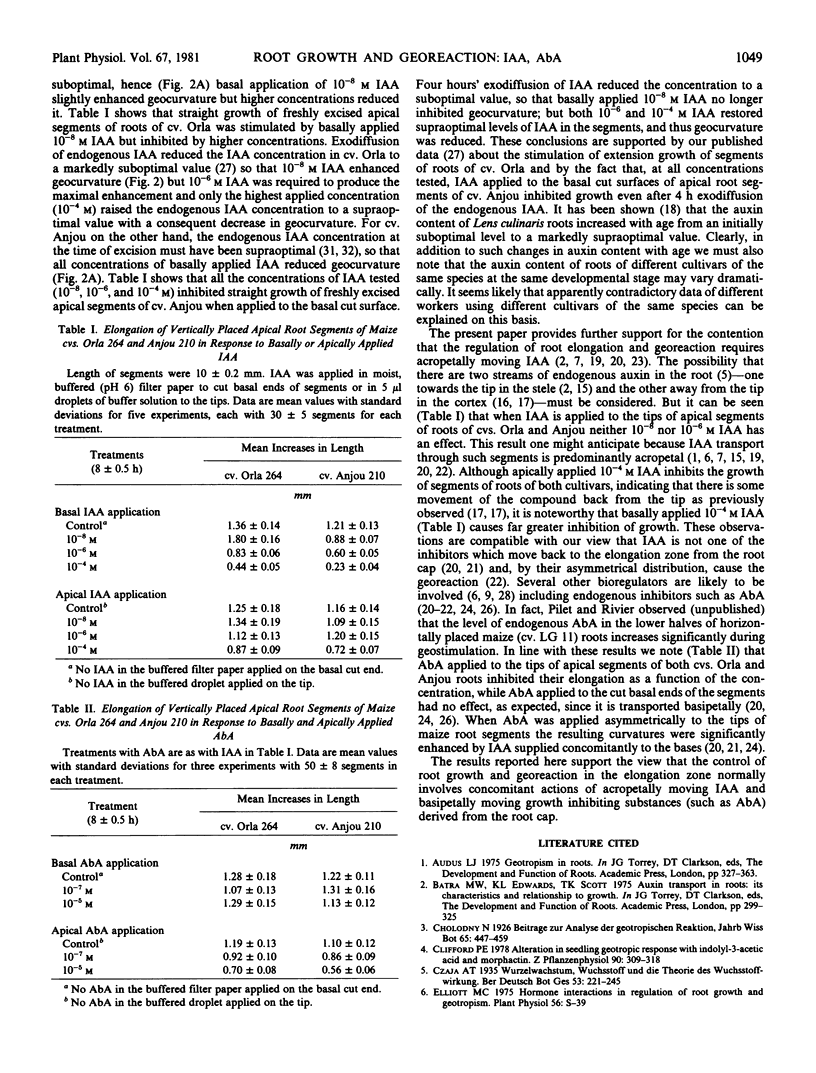Abstract
Apical segments of roots of Zea mays L. cv. Orla and cv. Anjou show a strong georeaction during 7 hours geostimulation. This is abolished by detipping the segments and restored by replacing the tips upon the apical cut surfaces. After exodiffusion of endogenous indoleacetic acid (IAA) the retipped segments showed a significantly lower geocurvature. Application of low concentrations of IAA to the basal cut surface of root segments from which endogenous IAA had not been allowed to exodiffuse increased the geocurvature of retipped Orla segments but decreased geocurvature of Anjou segments. At appropriate concentration basally applied IAA restored the georeaction capacity of root segments from which the endogenous auxin had exodiffused. The implications of the interaction between exogenous and endogenous IAA in the control of root georeaction are discussed with special reference to the normal role of endogenous IAA in the regulation of root georeaction and the variation in endogenous IAA content of roots of different cultivars of maize. The probability that the normal control of root growth and georeaction involves concomitant actions in the elongation zone of IAA moving preferentially in the acropetal direction and basipetally transported growth inhibitors (such as abscisic acid) produced in the cap cells is stressed.
Full text
PDF





